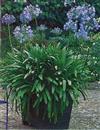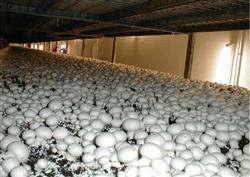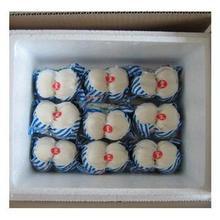Disease and pest control of blue lily (love flower)

The name Agapanthus comes from the Greek god of love, agap é and the god of flowers, anthos, but in fact, the reason why the flower is called "flower of love" is a long-forgotten mystery. In 1788, L'Heritier established the African lily genus. It was once classified as Liliaceae, then as Amaryllidaceae, and then as Alliaceae. It was later classified as Amaryllidaceae, and until now, it is simply listed as African Liliaceae. The name first released in Europe in 1679 was African Narcissus. Linnaeus began to put forward the name African lily, which is still used in Europe and the United States today. In South Africa it is called Agapanthus or Blue Lily. Growth cycle: love flowers are usually divided into two categories: evergreen type and deciduous type. Deciduous love flowers begin to grow in the first rain in spring, then grow rapidly and blossom in midsummer. Evergreen love flowers have some old outer leaves falling off and new leaves growing every year. The evergreen type has a long flowering period and blossoms in late spring or early summer, and midsummer is the main flowering season. Seed will begin to grow in autumn. In areas where summer is the rainy season, these seeds begin to grow after the first spring rain. Love flowers usually grow in summer or in the rainy season all year round, where the soil is rich in humus, which is sunny and shady. According to the experimental results of introduction and cultivation by Shanghai Landscape Research Institute, the basic growth cycle is about 18-24 months from seed sowing to flowering in Shanghai area. Pest and disease control methods compared with other bulb plants, love flowers are rarely threatened by diseases and insect pests. It is worth noting that its leaves and flowers are sometimes hurt by pests and diseases. Insect pest 1 red spider: very small, red. In a high-temperature and dry environment, it can reproduce very fast, and can reproduce 7-14 generations a year. It likes to net on the plant and absorb juice under the net, which makes the injured leaves withered and yellow, affects the growth of flowers, and may even lead to the death of the whole plant. When a large number of insect pests are produced, the control methods are as follows: spraying propargite (such as Omite) or triclofenac (such as Kelthane), 1200-1500 times dilution of dichlorvos EC and omethoate, or spraying whole plant with 1000 times deltamethrin dilution. Thrips (forage horses) thrips are very small insects smaller than small ants. The adult is 1.2 mm long and has a black or dark brown color. Six legs, a pair of antennae, two pairs of feathered wings, active and good at flying, when you squeeze with your fingers, suddenly disappear without a trace. Thrips suck the host juice with sucking mouthparts. Mostly in the heart leaves, buds and buds, cluster damage, can cause deformation, or develop into pathological changes. Thrips are small and easy to be killed by drugs. Insecticidal drugs, such as dimethoate, dichlorvos, pyrethroids, parathion and so on, have good killing effect on thrips. However, thrips live in flower buds and leaf axils, which are often the dead corners of spraying, so pay attention to these dead corners when spraying. When choosing pesticides, it is best to choose drugs that have the effect of internal absorption and vapor, and the effect is better. 3. The body surface of the pink scale is covered with white wax powder, and many species have wax filaments of different lengths around the insect body, which can be used as a basis for species identification. Parasitic on leaves, can cause deformation, or develop into pathological changes. Control can be fully sprayed with chlorpyrifos, for potted plants can soak the soil. 4. Although snails seldom directly infringe on love flowers, they are easy to spread diseases in plants, especially in evergreen plants. One way to remove them is to remove them by hand, and the other is to raise a few ducks and kill them with natural enemies. 5. The yellowish larvae of mosquitoes and flies hide in the flower bud of love, which will deform the flowers and cause diseases, so it is necessary to spray parathion (fenoxone), which is necessary after budding and before flowering. Disease 1. Leaf mildew, also known as erythema. It mainly harms leaves, as well as branches, petioles, sepals, petals, fruits and seeds. At the initial stage of the disease, there were nearly round purple-brown spots on the leaves, 1-5 mm in diameter, and then expanded into irregular spots, 7-12 mm in diameter, yellowish brown in the center, purplish brown on the edge, and obvious concentric patterns on the disease spot. The disease spot expands and connects into pieces, and in severe cases, the whole leaf is scorched. Dark green mildew is produced on the surface of the disease spot when it is wet, that is, the conidiophores and conidia of the pathogen. When the leaf edge is sick, the leaf is a little twisted. On the green stem, there are purple-brown round dots, some protuberances, and the plaque expands slowly, with a size of only 3-5 mm. The symptom of petiole is similar to that of disease spot on stem, but it is long strip, and there are dark green mildew on it. ① was used to remove diseased leaves and branches in time and burn them or bury them deeply in the soil below 15 cm in order to reduce the source of bacteria invading for the first time in the early spring of the following year. ② management should be strengthened, planting should not be too dense, and plants should be ventilated and transparent. At the initial stage of ③, 40% carbendazim wettable powder or 50% methyl topiramate was sprayed every 10-15 days for a total of 3-4 times, or with isocarbamide and mancozeb. 2. Leaves, petioles, twigs and pedicels of black spot can be damaged, but mainly damage leaves. There are two types of symptoms: one is the appearance of reddish brown to purplish brown spots on the leaf surface at the initial stage of the disease, which gradually expands into a round or amorphous dark black spot, which is often surrounded by a yellow halo, the edge is radial, and the diameter of the spot is about 3-15 mm. In the later stage, there are small black spots on the plaque, that is, the conidial disk of the pathogen. In severe cases, the lower leaves of the plant are withered and yellow, and the leaves fall in the early stage, resulting in the death of individual branches. The other is the appearance of brown to dark brown nearly round or irregular round spots on the leaves, on which black mildew grows, that is, the conidia of the pathogen. In severe cases, the leaves fall early, affecting the growth. Control methods: ① after autumn to remove dead branches, fallen leaves, burning in time. ② should strengthen cultivation management, pay attention to shaping and pruning, ventilation and light transmission. When ③ new leaves unfold, spray 50% carbendazim wettable powder 500-1000 times, or 75% chlorothalonil 500 times, or 80% mancozeb 500 times, once every 7-10 days, 3-4 times in a row.
- Prev

Main Points of Production of Original and Cultivated Species of Agaricus bisporus
Summer is a good season for cultivation of Agaricus bisporus. Cultivation of Agaricus bisporus can make full use of abundant crop straw resources in rural areas, which is a good way to increase income and become rich. However, the yield of Agaricus bisporus is sometimes unstable, which restricts the development of this industry. Therefore, it is very important to solve the technical problems of high quality and high yield of Agaricus bisporus.
- Next

Cucumber-Lily rotation technique
(1) selection of storage-tolerant varieties China is the country of origin of lilies, and there are many types and varieties of cultivation. There are mainly varieties such as Longya lily, Sichuan lily and lily lily. Among them, the white, flat ball-shaped, tightly clasped, sweet Sichuan lily is of good quality and resistant to storage. Lilies are usually harvested in early November and are often dug out with spades.
Related
- Fuxing push coffee new agricultural production and marketing class: lack of small-scale processing plants
- Jujube rice field leisure farm deep ploughing Yilan for five years to create a space for organic food and play
- Nongyu Farm-A trial of organic papaya for brave women with advanced technology
- Four points for attention in the prevention and control of diseases and insect pests of edible fungi
- How to add nutrient solution to Edible Fungi
- Is there any good way to control edible fungus mites?
- Open Inoculation Technology of Edible Fungi
- Is there any clever way to use fertilizer for edible fungus in winter?
- What agents are used to kill the pathogens of edible fungi in the mushroom shed?
- Rapid drying of Edible Fungi

